The choice of winter tires: studded or friction
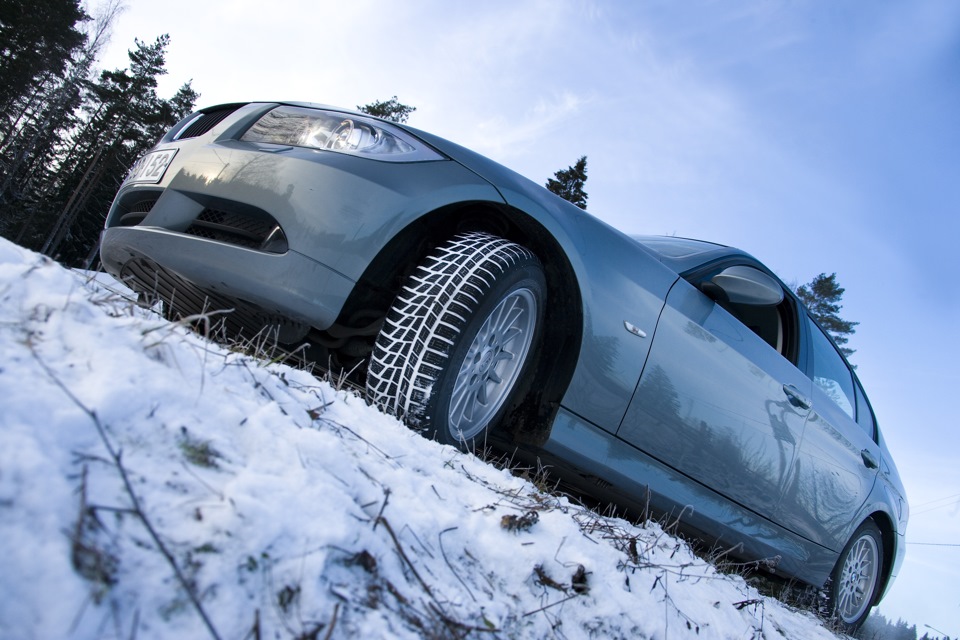
Winter, as always, came unexpectedly. And started to dance with the selection and purchase of tires. Someone has already passed, but many more in the process. The main question traditional — choose a studded or a so-called "Velcro"?
Many are also interested in topic — "Should I take the new Russian or better b/y shnye imported. The answers to these and many other questions I was trying to find have no time. Here for example is a story about a personal acquaintance with racing non-studded tires, with a real Japanese "sticky", with good studded tires, I highly recommend a look.
And below are some of my thoughts about the choice of tires, formed from communicating with sellers of tires, drivers, different drivers with extensive experience operating, plus your feelings. How correctly it turned out — to judge you. Material prepared for non-automotive journal, so the style is relevant))
 Studded tires in motorsports, typically very narrow. Although there are exceptions, for separate winter high-speed special stages in the rally sometimes use wide studded tires, as a rule, where the combined coating asphalt/ice/snow and temperatures near zero
Studded tires in motorsports, typically very narrow. Although there are exceptions, for separate winter high-speed special stages in the rally sometimes use wide studded tires, as a rule, where the combined coating asphalt/ice/snow and temperatures near zero
What kind of tires to ride in winter? This is one of the most complicated issues facing motorists before the onset of the coldest season of the year. Lately the roads of the cities actively cleaned in the winter, and mostly under the wheels it turns out the asphalt surface. Therefore become quite popular studless winter tires, and there are those who all winter driving on all-season or even summer tires. What is the difference between these types of tires and how it manifests itself in the winter? Try to understand.
First a few words about the terminology. Now in car shops primarily presents the five main types of tires for cars. It can be useful to learn to distinguish them by name, purpose and appearance, to individual negligent sellers are unable to take advantage of your gullibility. The easiest way to identify summer tires — it's actually the only type of tire in which the tread blocks missing slats. The so-called special narrow slot groove on the tire treads, usually zigzag shape (photos below).
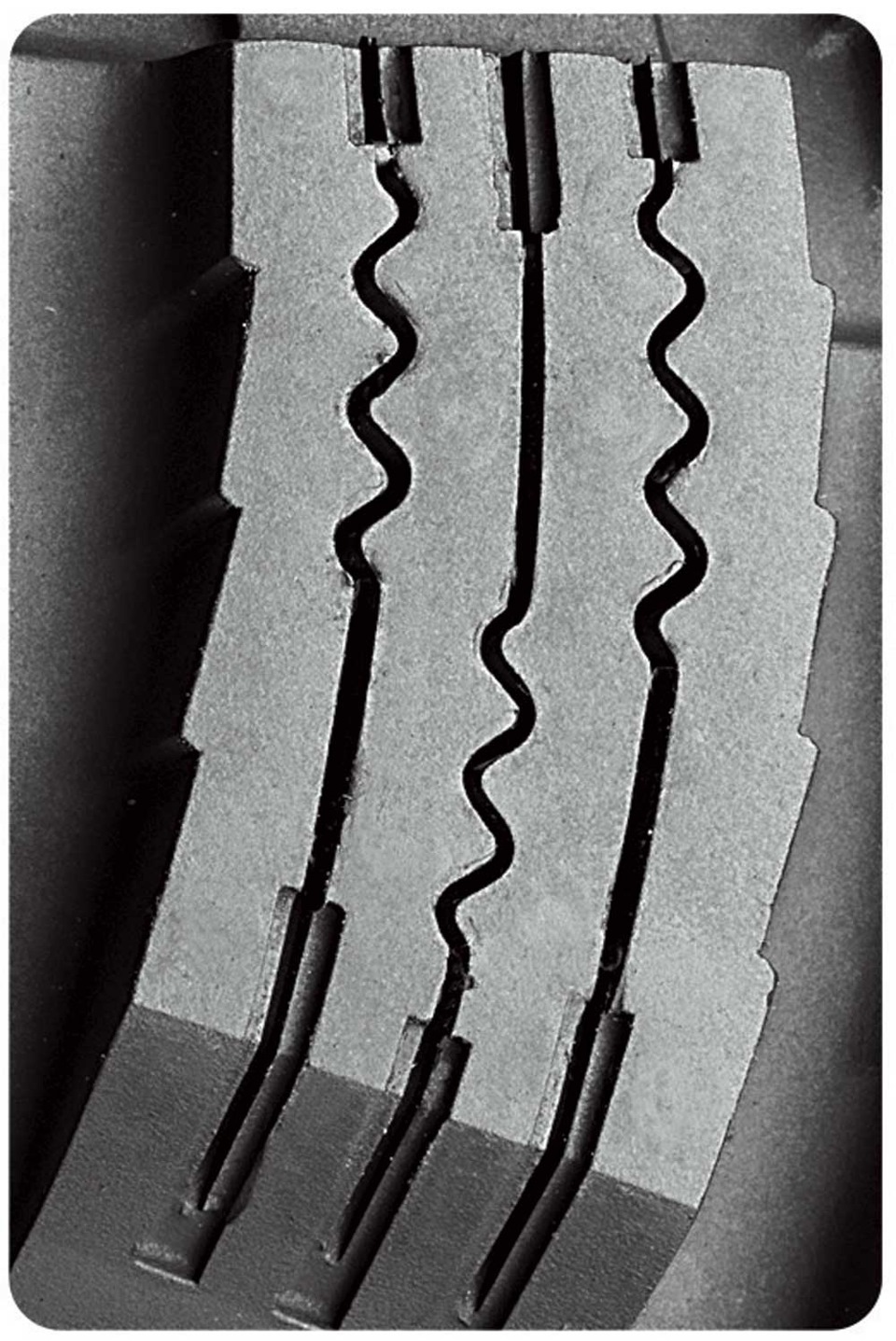
Non-studded winter tyres on the contrary are distinguished by the fact that their tread blocks are literally indented lamellae. They soften when in contact with the road and improve grip on surfaces such as snow and especially ice. In some cases, because of the increased coefficient of friction, non-studded winter tires seemed to just stick to the road, so they are called — frictional, and the people — "Velcro".
In turn, non-studded winter tyres are divided into two subtypes. Some are designed for harsh winters, have increased the number of sipes and softer rubber compound, these are called Scandinavian. Such for the most part presented in Russian shops.
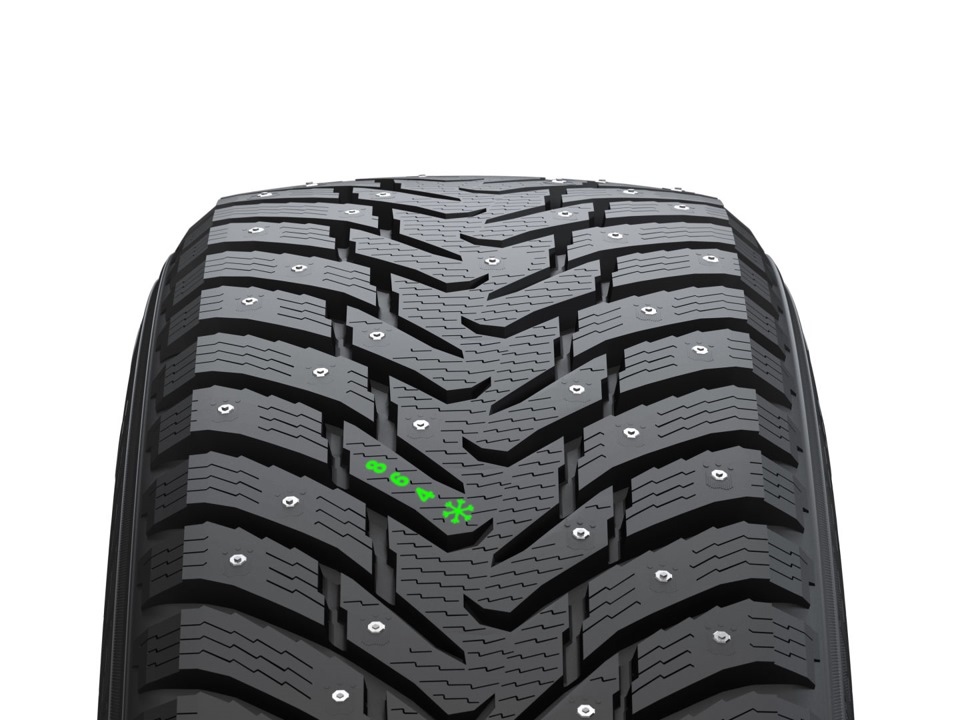 The photo is a typical Scandinavian type of tire, between the tread and the bead is made, generally in the form of angle
The photo is a typical Scandinavian type of tire, between the tread and the bead is made, generally in the form of angle
But there is another subspecies of the friction of the tyre for mild winters, or Central European, they have slats also happen a lot, but the rubber compound is more tough.
To distinguish between Scandinavian and Central European Riccione is quite simple: at the first intersection of the reference part (the tread) and sidewall (bead) is made, usually in the form of an angle. And second this place is made rounded, as in summer and all-season tires. In General, the Central European non-studded winter tires with characteristics that are rather close to all-season tires. The latter are characterized by more rigid rubber composition and minimum number of lamellae.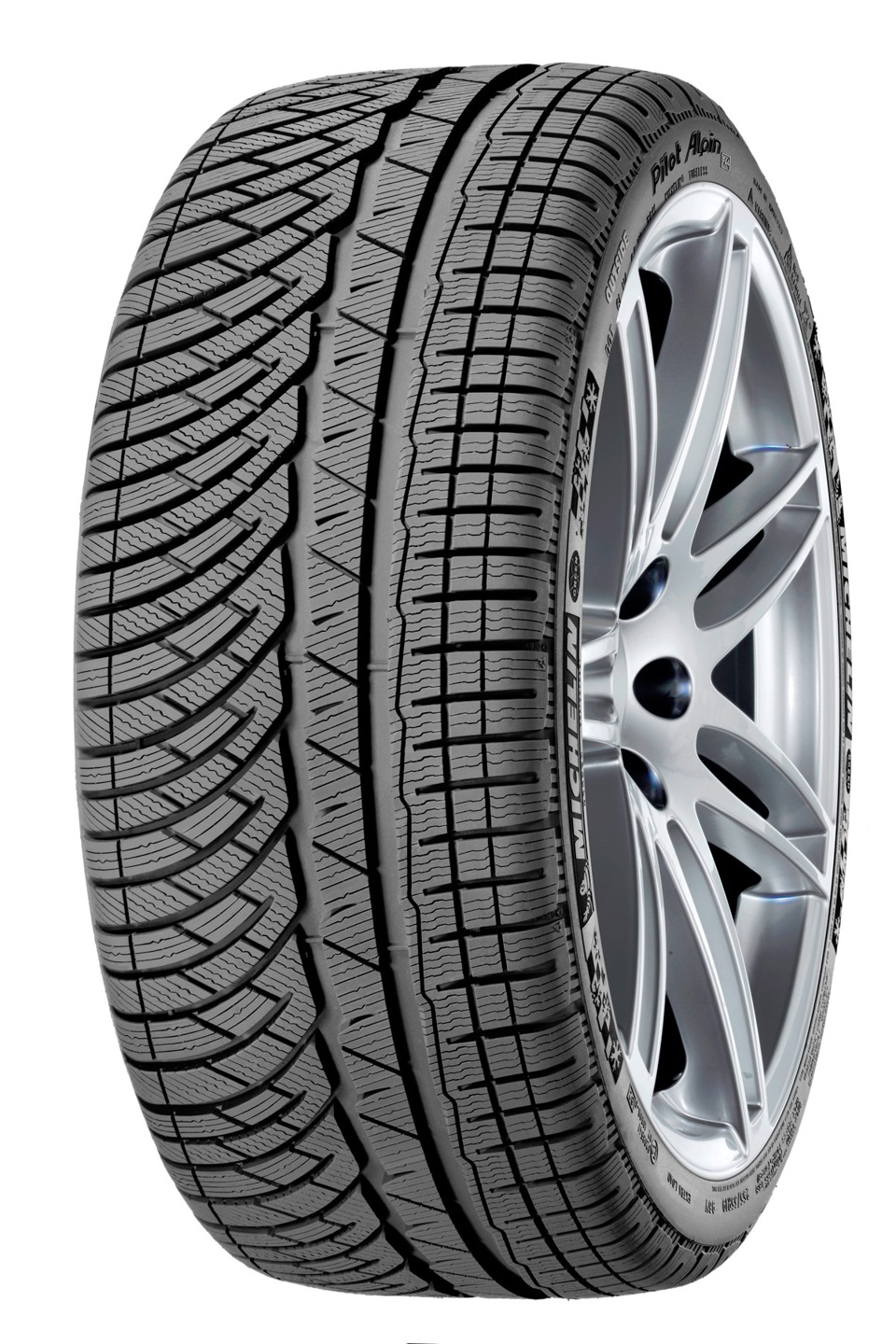 For comparison, a typical Central European type of tire, between the tread and sides are rounded
For comparison, a typical Central European type of tire, between the tread and sides are rounded
Lately you can often hear the opinion that modern winters are relatively snow-free, so it is possible to do all season or even summer tires, especially in the case of SUVs and crossovers. The main danger here lies in the fact that the rubber compound summer rubber and "vsesezonka" not designed for low temperatures, so they simply "harden" during cold weather. Even the slightest ice these tires often become helpless and are unable to provide the hook. Well, if the driver sees a slippery place in advance and will take measures to reduce the speed to minimum. But it happens in the winter this effect as "black ice", when in some places formed a slippery ice crust, indistinguishable in color from asphalt. Machine with bad rubber gets on this site and, for example, when this happens in turn, easily passes into an uncontrolled slide.
Early last fall I saw a picture of how such a plot was going in a bunch of five different vehicles, including the SUV. They relied on their skills and the capabilities of the machines, no one was on winter tires in "day of the tinman", but in the end everyone was forced to calculate the damage from unreasonable savings.

In order to avoid such conflicts, in many European countries long ago adopted legislation requiring all motorists to use winter tires in season. In Russia, a similar bill still in the plans. Fortunately, most motorists are adequate, so the winter has been long used tires, specially developed for this time of year. So can you expound on the differences in behavior on the winter road different types of tires.
In our time there is no lack of information on the subject of choosing any type of product. This also applies to the choice of tires. The most correct way is to look at the results of the comparative tests which are routinely carried out in specialized landfills. For example, in the Finnish Ivalo almost every winter hosts major test, which involved simultaneously more than a dozen sets of tires in various brands and types. The results are then published on the pages of leading publications, including Russian. We will not go into the deep wilds of test methods, it is carefully worked out over many years, constantly modernizarea to small details described on various sites on the Internet Consider overall findings and trends.
Lately you can hear such opinion that non-studded winter tyres in Scandinavian style almost equal to studded for ice and snow and by far the better behaved on the pavement. However, long-term results of testing show that not everything is so simple. At temperatures below 15 degrees really frictiony Scandinavian type can run on ice and snow even better studded. Soft rubber compound to the last retain their properties. While more rigid studded tires already beginning to harden at this temperature, and work as well, the spikes help, but not as effective as at higher temperatures.
The situation is quite different at temperatures above 15 degrees below zero. The vast majority of cases, studded tires look a lot more convincing than stickers in all kinds of exercises. They allow you to accelerate faster on ice, better keep the car in the turns and the braking distance is sometimes less than a few car lengths while braking from 60 km/h becomes more noticeable the difference-zero temperatures is most dangerous when ice and Packed snow most slippery. Let's not forget that it was under such weather conditions is a large part of the winter accidents. For example, according to surveys of insurance companies, the most critical month of the year is March, when there are constant fluctuations in temperature in the near-zero zone, and drivers become too confident in himself and his car after last winter and the tires by this time a little podsalivaya.
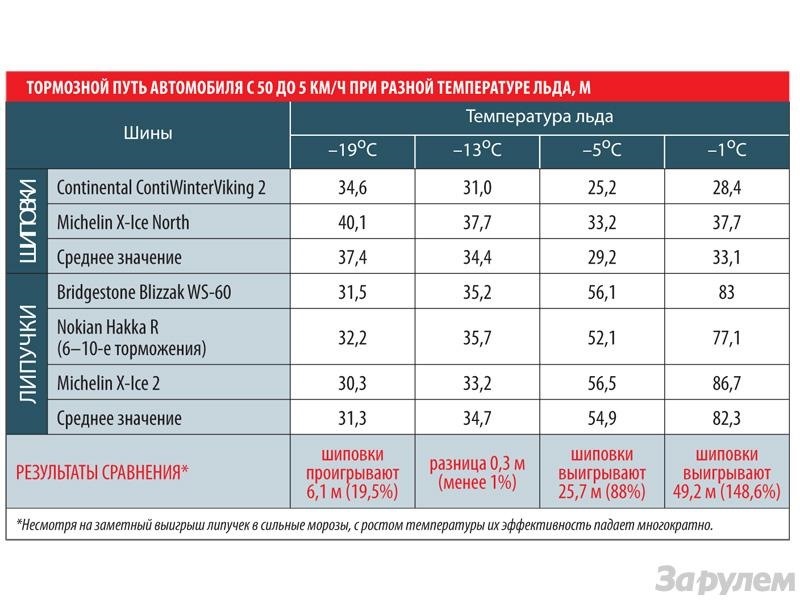 Carefully study the picture magazine tests at the wheel. Very informative the results of the tests on the ice at different temperatures
Carefully study the picture magazine tests at the wheel. Very informative the results of the tests on the ice at different temperatures
But the most surprising that and asphalt of modern studded tyres are often better friction. Watching any of the relatively recent independent tests right now, you will see for yourself. Often the best studded tires show a more predictable behavior on the pavement (both dry and wet), have a smaller braking distance, accelerate faster than the best of the friction tires for the harsh winters. Nothing surprising in this. Because the soft compound studless tire type Scandinavian plays on hard coatings for a negative role. Machine like little floating down the road, especially noticeable at sharp maneuvers. In turn, the composition of the rubber from studded tires are made stiffer in order to not flying spikes, therefore, for asphalt these tires even better.
And what about the entrenched belief that the spikes sliding on the pavement? This effect was indeed observed, but only in the case of tires obsolete. Progress does not stand still. And today, leading manufacturers use under the body of the stud substrate of soft rubber, which allows them to utaplivajutsja when riding on the hard asphalt. However, for the same reason, these spikes may slightly like to get involved in especially low temperatures (minus 15 degrees) and lose frictional even on slippery surfaces. However this loss is still minimal. You just have to take it a rule to go careful on studded tires in extreme cold.
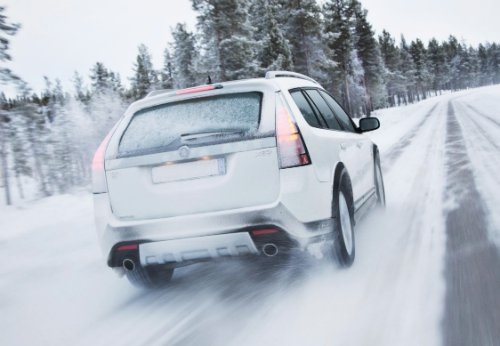
The second important point. Now in Europe have adopted new rules on the effects of spikes on asphalt. In this regard, the spikes themselves have the newest models have changed in design, as a rule, they have become smaller protruding part of the stud, and their shape is less aggressive. The results of the tests in Europe confirmed that the spikes of the latest constructions do not cause damage to the asphalt surface, and in General, modern studded tires behave on the pavement much more confident than the models of previous years.
As for non-studded tyres of Central European type, in comparison with the Scandinavian factionname they still behave better on asphalt surfaces. But on ice or snow often behave only slightly better than vsesezonka. The main purpose of such tyres — operation in regions with a predominantly snow-free winters. Central European non-studded tires, unlike summer or all-season tires will allow you to overcome areas with ice or snow, which can be impenetrable for the latter. In Russia they are recommended for use only by residents of the southern regions. While Central European "of ficiency" is valid at high speeds, sometimes up to 240 km/h while the Scandinavian usually have a margin for the maximum speed around 160 — 190 km/h.
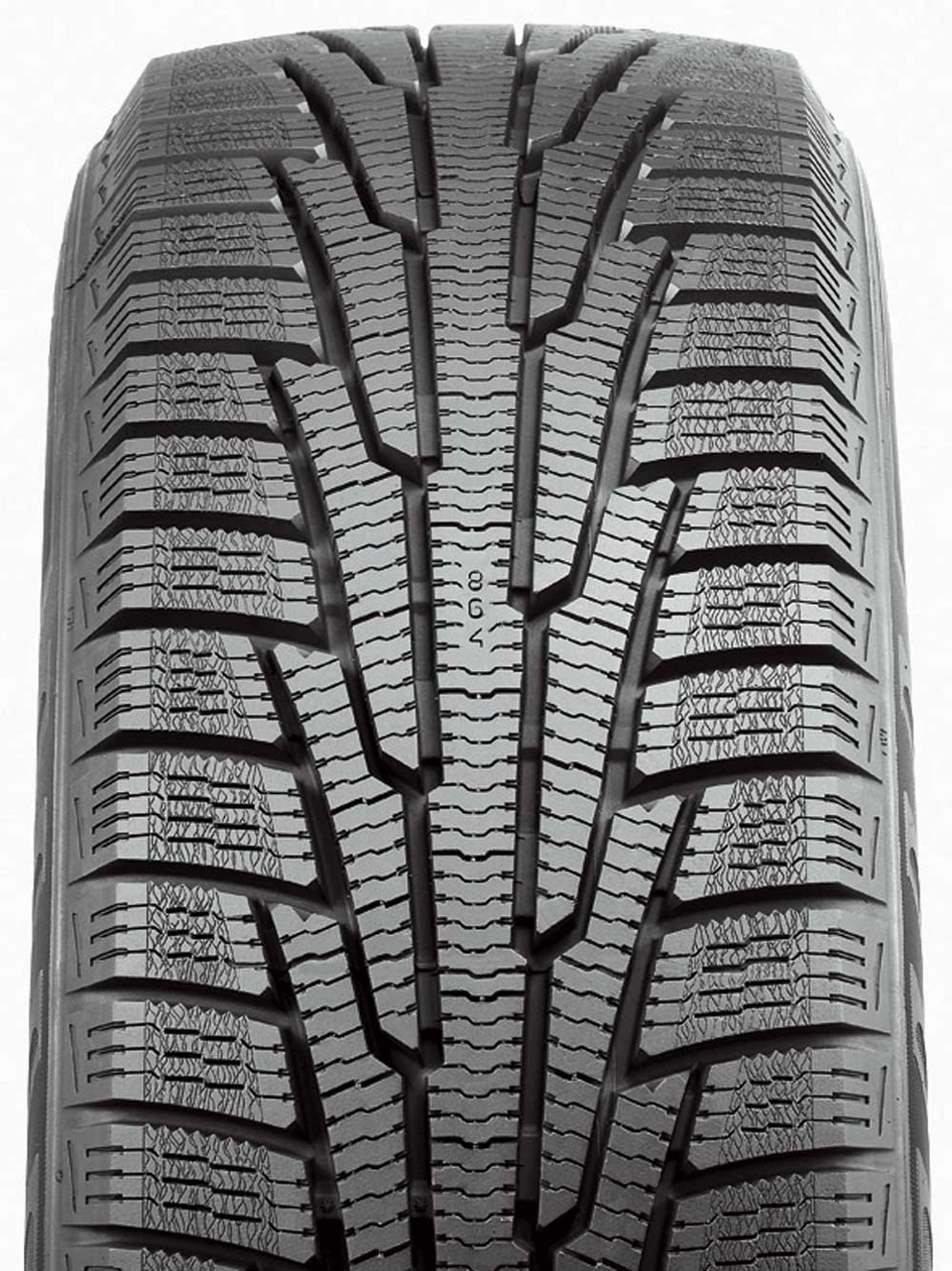
Need to remind you about two important things when choosing. First, the main working layer at any rubber is always the top (this applies particularly tread depth). So buying tyres second hand clothes is considered to be unreasonable. After all, together with the upper working layer of rubber evaporate and its most important properties. A competent driver usually changes winter tires after every two to three seasons.
If tyres are in stock, then over time it can "sabbeth" and, again, dramatically lose its properties, even if no one went. Therefore, when buying tires look at the sidewall — there is always specified week and year. In some countries of Europe legally prohibited from selling in the automobile tires, which for several years, so don't listen to sellers about its harmlessness age of the rubber, and just see yourself at the date.
Don't forget that in winter do not put very wide tires because the narrower the tire, the more pressure it exerts in the contact patch. It is easier to drive on the tracks, the spikes easier to bite into the ice more effectively porubitsya snow to asphalt. And only on relatively deep snow when the bus is unable to reach solid cover, too wide tires can be more useful in the winter. In General, the optimum is to put on the winter tires of this size — which is recommended by the vehicle manufacturer.

In regard to the need of spikes, much depends on the quality of running. So you should treat this issue with special attention Do not make sudden acceleration and braking in the first 500 — 1000 km mileage, try as carefully as possible to pass the tram tracks and pits with sharp edges. Then spikes well prisideda in their nests, and then last as long as possible. Although there are manufacturers that produce not just the factory studding, but also thrown spikes on the glue. This is the most effective method of fixing to date, several times more reliable than any other. But it does not mean that the spikes just to fly will not. It all depends on the driving style of the owner of the car.
And the last one. Test results prove that the best characteristics show now bus the so-called first line, which include leading brands. To distinguish these quite simply — the highest price tags. Another thing is that among the tires of the first line is not too good. More available bus the second line of the lose leaders, but individual models easily give the fight much more expensive "losers" of the first line. Relatively inexpensive but decent tires for the second line can be a good choice in terms of price/quality. How to know specific names of the best models in the absolute and the most successful in terms of price/quality? Recommend before buying is to read the comparative test drives and then go to the store. Retrieved on personal experience, this method of selection is quite effective. Unfortunately, some sellers of tire can easily sell you tires are not the best models, with the mind-they are all good. I hope these tips will help you in choosing. Although I do not consider them the ultimate truth. Add observations in the comments. Be careful on winter roads, and don't skimp on the tires!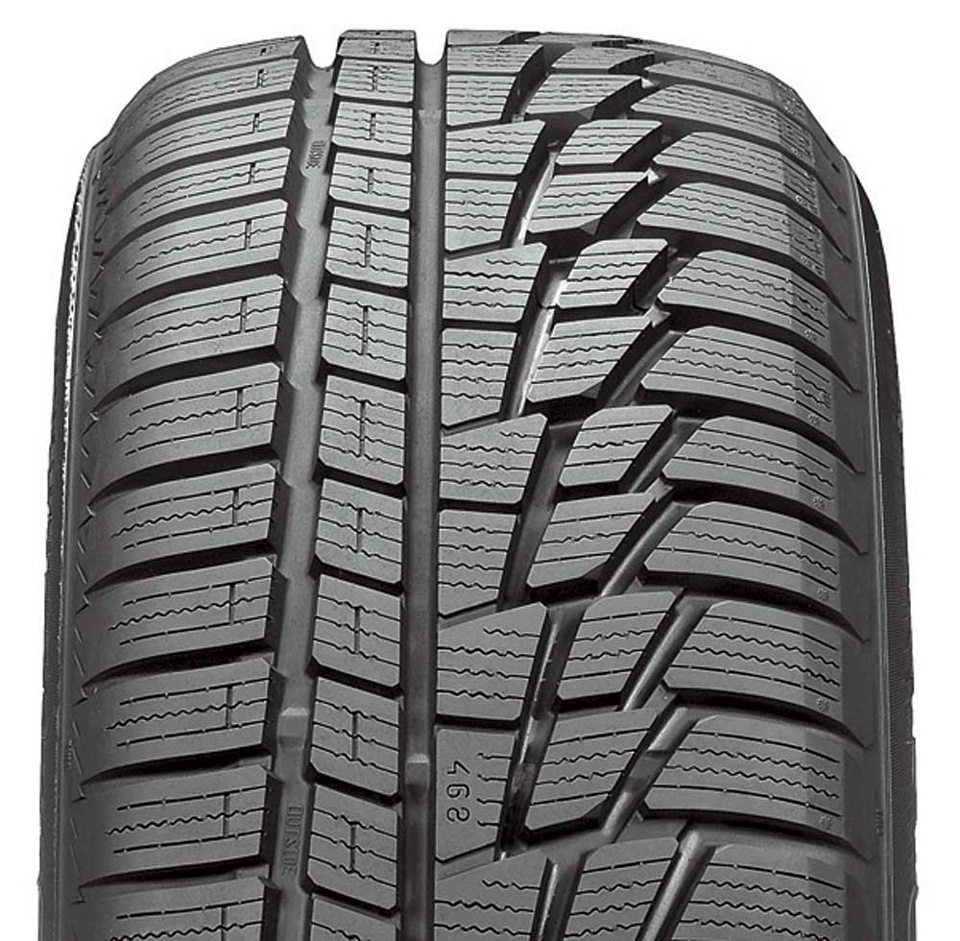 Photo — Central European friction tyre
Photo — Central European friction tyre
A couple of comments from the experts.
Nikolay Zhavoronkov, Director of the team KAMA-EURO Racing Team, master of sport international class, multiple winner of races in Europe and Russia:
— I had to travel on friction winter tires. To be honest, not very much. Studded tires feel much more confident and calmer. If we have cleaned the roads as good as in Europe probably would have went primarily by "Velcro". But given our realities, spiked rubber looks a priority, so I choose this, and all your friends suggest. Although in Sweden and Finland too, all travel predominantly on the spikes, although the roads clean in the winter well. However, each case is individual, and, of course, there are drivers which friction rubber suit anymore. I would like to mention that winter tires of the Russian production in the last 20 years has gone far in terms of technology and quality, and today they look quite decent in its price range. It is also proved by the results of independent comparative tests, which are held periodically on special grounds.
Ruslan Sarakaev — Director of the shop from Kazan:
— When choosing tires, consider what conditions will occur in operation, preferences of the owner of the car. But it should be borne in mind that often in the winter not to have to choose where to go. Conditions are often dictated by the weather. For those who are important comfort, generally work better on non-studded tires. But inexperienced owners, we recommend to always choose tyre with spikes. They better behave in an aggressive environment, which meet periodically in the winter to ice on most types of snow cover.
The majority of the drivers try to take care of security, so in the structure of sales of winter tyres higher the percentage of expensive models, in comparison with the summer period. And rightly so. After all, top models are made of the finest materials, technologies, quality control is higher. In winter, the risk of getting in an accident is much higher, so the correct choice of tyres is more important. As for the tires the second line, and here progress is not in place. But, of course, such tires are usually inferior to the leaders, because they have the materials, technologies and quality are lower on the order. As for the Russian tires, the best ones show themselves well against their competitors in cost, and the demand for them is stable. I can say that compared to products from China they are still definitely better, and overall the ratio quality/price there are a number of quite successful models.
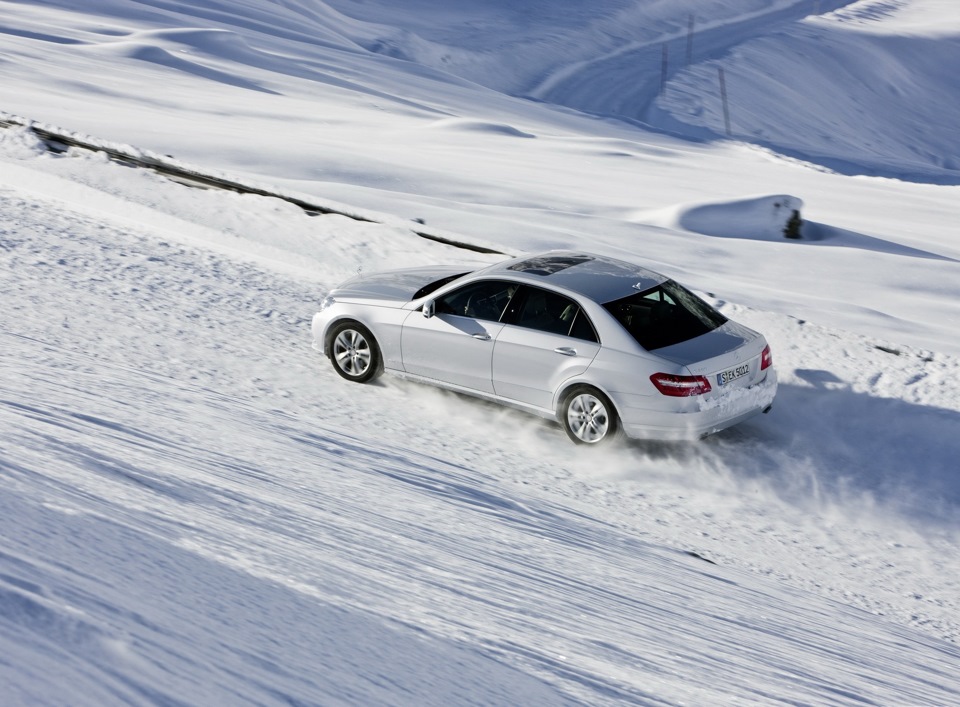
Do not forget to look here, not usually advertise my own article, but there's really good stuff happened, one of the few that I myself liked. Remember, there's a post about a personal acquaintance with racing non-studded tires, with a real Japanese "sticky", with good studded tires (which is why I chose to your own car).
Our group Vkontakte, Facebook and Instagram, come on in.
Thank you for your attention and see you soon!
P. S. There is still this visual infographic (picture) from the Belarusian portal BelTA:
LEGNUM-DVMAX
as you can see the advantages my at temperatures warmer than -10
the pros and end.
at low temperatures, the worse the hook.
on asphalt more noise
on the pavement worse than hook
often the spikes do not stay long.
but at the same time and Velcro Velcro strife.
the main thing to choose a new and Bridgestone. tested on rallysprint on the ice.
it all depends on what you winter and off road, if you have 90% of the time visible asphalt dry/wet/snow slush, the studs you will do little every day is touch the spikes and listen to it for three days when they are really needed, it makes no sense, and in this operation you are likely to very quickly lose or broken off or blunted spikes and on the second season is simply a mediocre frictions with accompaniment from the remnants of thorns. If you are on the ice or the rolled snow, then of course there is a sense in thorns.
In my opinion, the better road is removed, the greater the likelihood of black ice and really slippery and treacherous. I ukatanomu snow and Velcro closure ))
HY*)) all depends on the region, we have in our beloved Siberia without thorns does, and now the roads are generally poorly removed...*))) and in my experience about 70-75% choose "spikes" the other "Velcro". I vaabsche do not care you can and in the summer always and everywhere...but there are already properties of different tires when the temperature changes...hohoho*)))
Same everywhere more or less equally dropped then :) the level of cleaning then decides, in östersund in the morning, clean start in Stockholm so even scored.
Only from Central Sweden is back — there places to leave a thin layer of snow-ice, where clean out to asphalt, the track Åre — Östersund cleaned to asphalt at -25. On the way to Stockholm there were different conditions on the track, where well-brushed, in the district of Gävle it's not really. Arrived in Stockholm and it was a beauty, the center of the city — unpeeled deep snow. Here's the Scandinavians experience, I did not understand what :)
antares-se
> Although in Sweden and Finland too, all travel predominantly on the spikes, although the roads clean in the winter well.
Where is it? Can share the link to the site with the traffic cameras across the country — everywhere in the winter, ice and track, road services, even in Stockholm kicked in full 8 hours to go 30 miles home the realities of the Nov.
We are now in Karelia contain a track in the snow rolling forward, I speak from experience of the Scandinavian countries, so I'm out for the spikes, and the city we have not the hood, but this year the rains, the frosts, the Velcro finally channel.
These are the words of a man who was there, recorded there, then when he was there, everything was in order. I myself have only visited Finland in winter time, in my stay the road was in a perfectly purified state, route Lappeenranta — Joensuu
> Although in Sweden and Finland too, all travel predominantly on the spikes, although the roads clean in the winter well.
Where is it? Can share the link to the site with the traffic cameras across the country — everywhere in the winter, ice and track, road services, even in Stockholm kicked in full 8 hours to go 30 miles home the realities of the Nov.
better non-studded Nordic type, i.e. hook and loop fastener
then there are the "Europeans" — they are on the pavement is a priori better, but just make lousy on ice and snow ( unlike Velcro )
We're talking about or have you forgotten already? If we assume that the spikes are better than non-studded tires on asphalt.
the facts speak otherwise ...
and thorns for a hundred years how to make "floating" -on the pavement, they just pressed inside
Djuzeppe
Mish, you're a grown man, but this, I'm sorry, uynyu write! If the spikes on the pavement behaved better than Velcro, they have traveled and summer. They better cling... 😆
argument super !
...if at the rink in the skates more comfortable than the thongs -why are they in the bath do not go ? )))
And studded tires and Velcro loose on the pavement not only summer, but even winter "Central European" tyres, so in the summer for them to go undesirable. And in the dispute — who is better on the pavement from studded or Velcro solves everything and instrumentalnye measurements, and direct comparison carried out by the testers, journalists, figures to be fooled. That's only during emergency braking spikes fly, so rarely right in half brakes on asphalt, but sometimes you have — in pre-crash situations
Mike-fiesta
Yes please, any number of Avto-revyu test of winter tyres, any test Finnish, American or German publications, for example the latest article "Behind the wheel" with measurements braking on the pavement, including a comparison of studded and non-studded tires: www.zr.ru/content/article...t-ostanovitsya-bezopasna/
You read from time to time results for modern tires, so that progress does not stand still, every year changing a rubber composition, tread pattern, etc.
Mish, you're a grown man, but this, I'm sorry, uynyu write! If the spikes on the pavement behaved better than Velcro, they have traveled and summer. They better cling... 😆
the measurements for the wheel, I don't believe it! sales especially tests of rubber!
then who to believe -uncle Vasya from the neighboring garage ?
Everything is clear, do not continue. You from Moscow there vidnna on what tires to Siberia to go.
When you slip on the spikes are very characteristic traces, which is difficult with something confused. There are such traces, but there are zapolirovan ice. What conclusion do we draw from this?
Well, it turns out this is just your speculation. What tires were on the car you drove is not visible.
Lcfiend
Every winter I look from the window, as they are not only stormed, and the course, and Ford... In our region, the Velcro is not the channel, infa 146%
And you can see what the cars tires? ))
Schutzengel
I have 8 hack thing...this is the quietest studding
a friend says that seven quieter. He rolled a seven, now eight. The seven — to-noise did not notice.
Vot vam fakti: 3 dnia back temperatura -7 poezdka po gornoi doroge -plotnii utoptannii sneg vperemejku s ledianimi uchaskami - gorka dovolno krutaia s nexilimi povorotami-mashina perednii passat b5 2.8 v6 privod mexanika - shini -bridgestown blizzak vrx - ni razu! probuksoval ne, ne zanosilo kept dorogu kak na relsax! Vsem udachi!
I'm just such a case was described in another post on this topic, the link at the end of the text there))
as practice shows no Velcro on the ice. ride on lance Velcro closure at 2115 spikes. so the spikes on the ice even in the hill without straining drops. but the Velcro is already not ale. in one place checked
XXX-XF
Comparison table of stopping distance useless, absolute nonsense ! Even see ridiculous. Studded tires taken only 2 manufacturers, and sticky why is 3. More laughter causes a stopping distance spikes at -1. Velcro at this temperature, brakes much better, proven.
It's not the ambient temperature, and the rate.ice!
Such tests fairly regularly, just not always in the table is indicative, as in this case. Let's take another example, more recent and from a different edition: auto.mail.ru/article/6267...chaem_na_glavnye_voprosy/
Comparison table of stopping distance useless, absolute nonsense ! Even see ridiculous. Studded tires taken only 2 manufacturers, and sticky why is 3. More laughter causes a stopping distance spikes at -1. Velcro at this temperature, brakes much better, proven.
slain about the roads of this nonsense of bureaucrats that would cut down the headstock on the studded tires. road kills low-quality asphalt. Ban internal combustion engines in internal combustion then and all will breathe perfectly. And you all the best.
OK. Yeshe road nesip Bereket, and our health and that breathing this asphalt dust:-(
All the best.
if the guise of good noise from the spikes are not audible. the main thing is to find a protector that does not hum.
It was about the tires, really lipovenos chustvuesh himself more confident it's true. Just nesip softer and quieter, as you like.
I still wanted to keep the video recorder and forget.And wanted to keep because went after him, catching him and thought it Priora goes ahead ( still think, I'm going to get her), ahah, as they were catching up I realized that it's X6 in the village on the straight caught up with him, drove through the village, he gave the heat and flew, I still talk out loud — well, run run son, I still will fuck you up ( my wife even laughed). It was started again a serpentine and it is a miracle I am blown away, I quietly overtook and drove on as we drove. I don't care believe it or not, is not the point. Streamers is up — down, right, left and I saw him with different angles ahead in the distance, very similar to the prior )))))
X6 certainly laugh thank you) with your words and vases and Mears the same thing, and th body iron engine sharone — all the same), to vdovets the technical specifications will not tell you the collective farm: setting sossi different database and also different)
Cards from the word go — karting, and no sports car!
In short I am the king of kings and I already love you)
triner74
Anyway, fuck oderis all sorts of family sedans, and I rulitsya as card — read top gear.
by the way, for your swift suspension as on my ancient family sedan )))) ahahaha, che already there rulitsya you have I XS ))))
go to the mountains every 2 week. on streamers all sorts of tourists, even on a BMW X6 from my dick. and I think you would be on your super quads left behind me.
Anyway, fuck oderis all sorts of family sedans, and I rulitsya as card — read top gear.
in profile first, look at than to ride, and then pack your crap. What would go in the corners of the cover are not needed. From that he goes on like this, because hell keep her, fills his hand so to speak.
Nachem inaudible...) at Oise chtoli...) and I have the swift the king turns. Clarkson warming up on the snake on it before sitting down in the McLaren F1)
change your car, you have a problem with mine. The spikes are cut well even the asphalt and the brake well. Perfectly clean asphalt does not happen in winter! The sound from the studs? You have a problem in a car with soundproofing. Today was carrying an acetylene cylinder had to remove the back seat bottom. And today is the first time I heard clink spikes. And so all normul.
Who said that dragging the brake way more spikes on the asphalt and thundering... ugh... got from the previous owner хака7 want to get rid of.zuluu.yet.
and you in the summer on spikes not ezd and it is not like the iron. if winter drags on you then it's not Babin, sit on the bus better )))
Like iron on asphalt)
Invented normal rubber wheels, and some genius thought there piece of iron to stick)